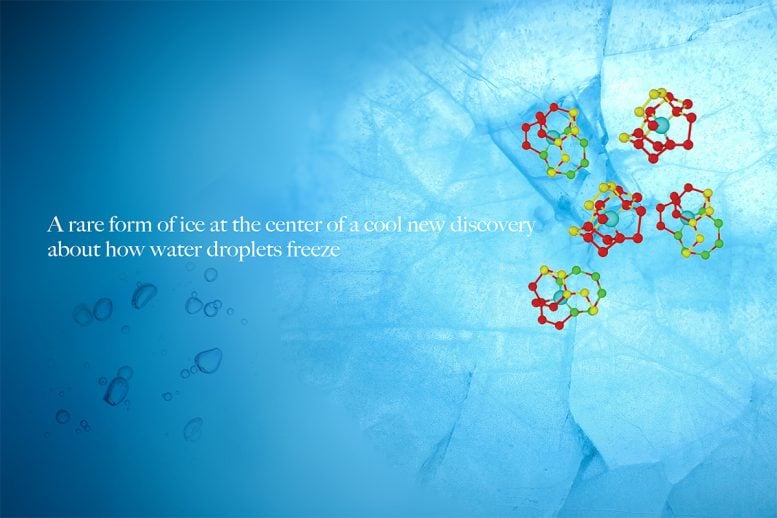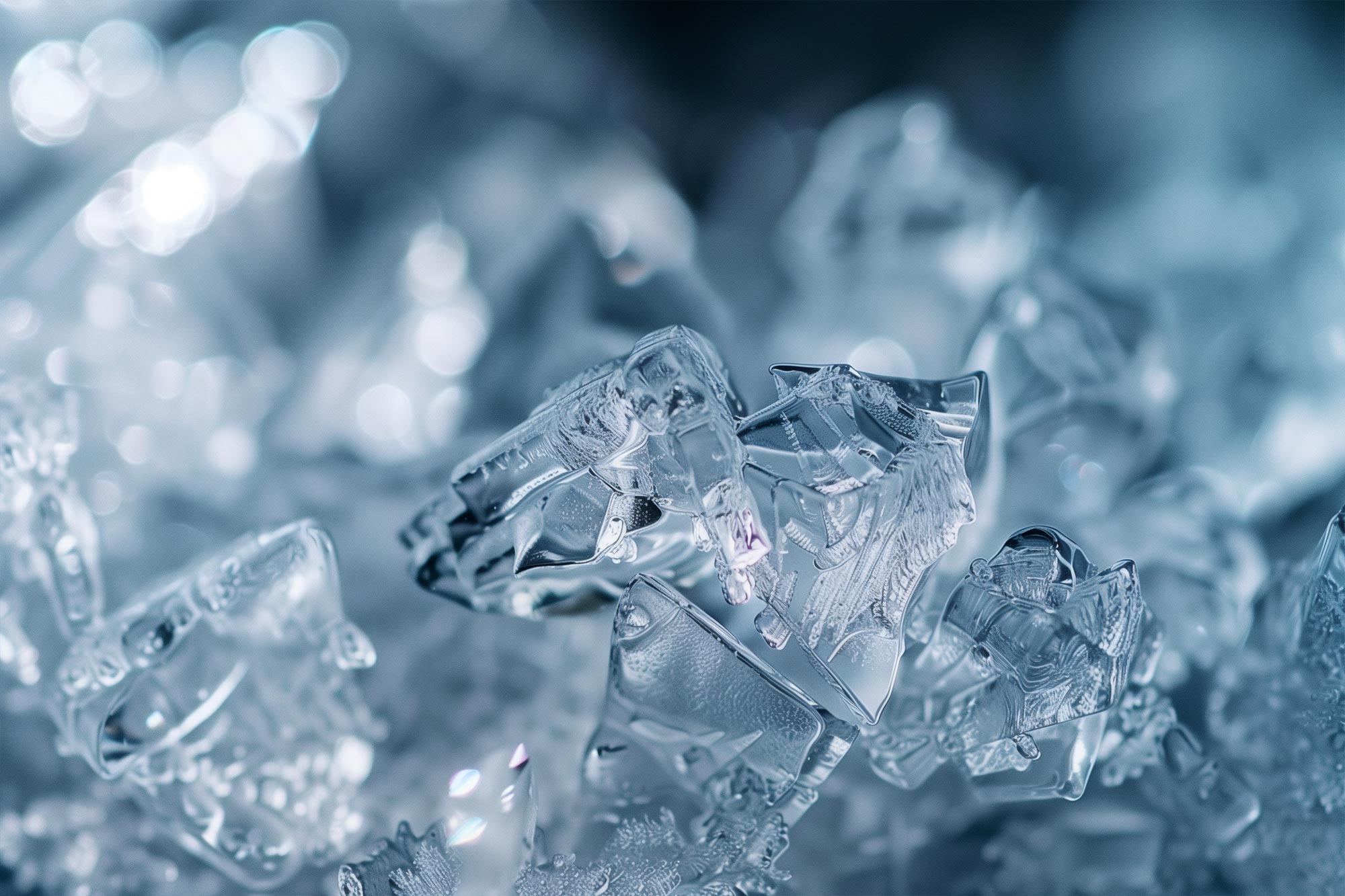Japanese researchers have discovered Ice 0, a new type of ice that forms near the surface of water, which could redefine scientific understanding and impact technology and climate studies. (Artist’s concept). Copyright: SciTechDaily.com
Researchers from Japan have discovered a new form of ice called ice-0, which can help ice crystals form in supercooled water. Their study reveals that ice nucleation can occur near the surface of water droplets due to ice-0-like structures, resolving a long-standing debate. The findings have important implications for various fields, including climate studies and food science, by enhancing our understanding of ice formation.
Ice is more complex than most people realize, with science identifying more than two dozen different types of ice that form under different combinations of pressure and temperature. The type we use to cool our drinks, known as ice 1, is one of the few forms that occurs naturally on Earth. Now, researchers in Japan have discovered another type: ice 0, an unusual form of ice that can start forming ice crystals in supercooled water.
Ice formation can begin near the surface of liquid water from tiny crystalline precursors with a structure resembling a rare type of ice, known as ice 0. In a study recently published in Nature CommunicationsResearchers from the Collaborative Research Division of Ice Protection Science at the Institute of Industrial Science, The University of Tokyo, have shown that these ice-like structures can cause a water droplet to freeze near its surface rather than in its core. The discovery solves a long-standing mystery and could help redefine our understanding of how ice forms.
ice nucleation process
Ice crystallization, known as ice nucleation, typically occurs inhomogeneously, or in other words, on a solid surface. This is typically expected to happen at the surface of a container of water, where liquid meets solid. However, this new research shows that ice crystallization can also occur just below the water’s surface, where it meets air. Here, ice crystallizes around tiny precursors that have the same characteristic rounded structure as ice 0.
“The simulations showed that a water droplet is more likely to crystallize near the free surface under isothermal conditions,” says Zhang Sun, lead author of the study. “This resolves a long-standing debate about whether crystallization occurs more easily on the surface or internally.”

Researchers from the Institute of Industrial Science, University of Tokyo, have discovered that ice begins to form near the surface of water through structures resembling a rare type of ice that was recently discovered, helping us better understand ice formation. Source: Institute of Industrial Science, University of Tokyo
Ice precursors 0
Ice 0 precursors have a structure very similar to supercooled water, allowing water molecules to crystallize more easily than it, without having to directly form themselves into the structure of ordinary ice. Small ice 0 precursors form spontaneously, as a result of the negative pressure effects caused by the surface tension of water. Once crystallization begins from these precursors, the ice 0-like structures quickly rearrange themselves into the more familiar ice I.
Lead author Hajime Tanaka emphasized the wide-ranging implications of this study, noting that “the findings on the mechanism of surface water crystallization are expected to contribute significantly to various fields, including climate studies and food science, where water crystallization plays a crucial role.”
A more detailed understanding of ice and how it forms could provide invaluable insight into a variety of fields of study. This work could be particularly important in meteorology, for example, where ice formation from ice-like precursors could have a more pronounced effect on tiny water droplets such as those in clouds. Understanding ice could also have benefits in technology, from food science to air conditioning.
Reference: “Surface-Induced Water Crystallization Due to Precursors Formed in Negative Pressure Regions” by Zhang Sun and Hajime Tanaka, July 26, 2024, Nature Communications.
doi: 10.1038/s41467-024-50188-1

“Amateur organizer. Wannabe beer evangelist. General web fan. Certified internet ninja. Avid reader.”




/cdn.vox-cdn.com/uploads/chorus_asset/file/25550621/voultar_snes2.jpg)


More Stories
Watch a Massive X-Class Solar Explosion From a Sunspot Facing Earth (Video)
New Study Challenges Mantle Oxidation Theory
The theory says that complex life on Earth may be much older than previously thought.